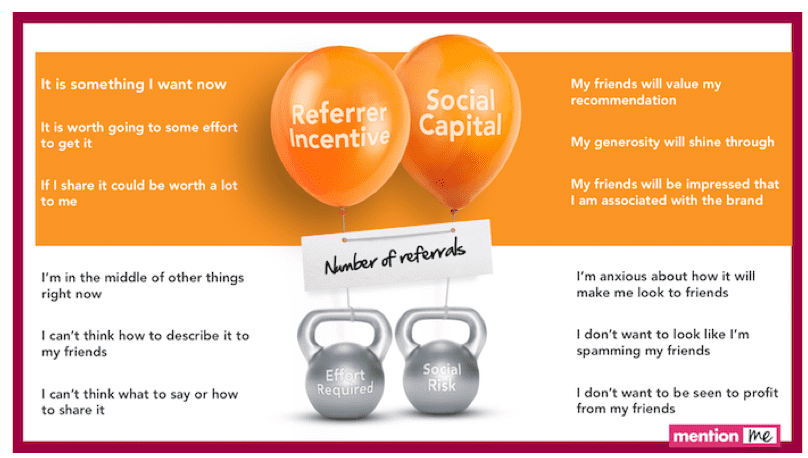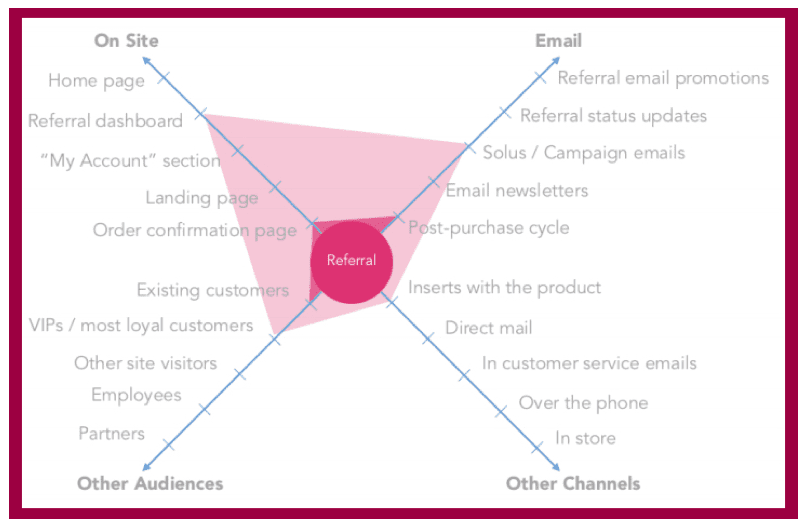Referrals are the most trusted marketing format. You need to harness them.
Every other year, Nielsen publishes its Global Survey of Trust in Advertising report, compiling latest trends in consumer sentiment towards various marketing and advertising channels.
Its latest report highlighted a growing trend in the industry; that consumer trust in traditional advertising channels has markedly decreased, whilst ‘personal recommendations’ among customers is by far and away the most trusted advertising format.
The fact that customer-to-customer referrals was ranked number one for trustworthiness, was of little surprise. But what did cause a stir was the emphatic extent to which it led the way in consumers’ opinions.
Personal recommendations didn’t just edge out all other options — it blew them out of the water, with an 81% vote of confidence, compared to its nearest rival - consumer online opinions - which trailed with just 58%.
For most modern marketers, reports such as these merely confirm what we’ve suspected for a while: the digital economy has permanently changed the dynamics of communication between brands and consumers.
Old-school ‘push’ advertising and sales techniques no longer cut it. In today’s hyper-connected, social media dominated landscape, consumers crave authentic, trustworthy experiences — delivered by human, believable, and value-adding brand voices. It’s what’s been driving forward a quiet ‘trust marketing’ revolution in recent years.
Adapting to consumer demand for authenticity
For all marketers, adapting our understanding and approach in order to become more led by the voice of the customer, is an increasingly urgent and necessary journey.
Customer referrals are key to that. Specifically, customer referrals delivered across a range of online and offline touch points, tailored to the habits and preferences of our particular audience, are the holy grail of the new trust marketing world.
In order to get there, we need to understand both the psychology of referral, and how to translate that into great cross-channel referral experiences that speak to customers in the right places, at the right time, in the right ways.
Understanding the psychology of referral
Referral marketing, done well, creates a virtuous chain-reaction of quality interactions between people who like, trust and listen to each other. They’re a win-win for all concerned.
Brands who run referral campaigns can typically experience between a 10 to 30% increase in customer acquisition. But these aren’t just any old new customers. They are the best friends of your best customers.
As a result, quality begets quality. These new referred customers typically spend up to 25% more than the average on first orders. More often than not, customers who were acquired through referral campaigns carry a significantly higher than average lifetime value to the business, as much as double the average customer lifetime value, is not uncommon.
Achieving these kinds of results lies in understanding your customers’ behaviours and the key motivating factors in their decision to refer your products.
The kind of logic that’s running through our minds (a lot of the time, unconsciously) as we weigh up whether a social action is, literally, worth doing, goes something like this:
If I contribute x to this person or group — how large is the risk of this action being socially ignored or rejected vs. how confident am I that this action will be socially recognised and rewarded?
And it is this exact psychological dynamic that is key to successful referral marketing. When done well, social referrals are the most powerful form of marketing there is. Referring a product or service to a friend is, before anything else, an act of trust, reciprocity and (hopefully) social belonging.
The psychology of referral is best examined using the metaphor of balloons and weights.

In a nutshell, the absolute best referral offers put forth extremely compelling incentives, as well as instilling the potential referrer with a sense of impending ‘social capital’. In other words, confidence that they will look good and that the offer will be received well by friends.
Conversely, such offers are never weighed down by perceived high effort to gain the reward, nor ‘social risk’ — the anxiety over an offer being received negatively by friends.
Key to finding this ‘sweet spot’ is constant testing and optimisation to truly understand what works and what doesn’t for your customers.
Promoting and delivering cross-channel referral programs
Once you’ve understood and optimised the basic elements of referral campaigns, success hinges upon where, when, and how to promote and implement the offer.
This is when you need to identify your customers’ ‘greatest points of delight’ in their routine interactions with your brand, and strategically include referral offers within those.
An obvious starting point in E-commerce, is your website’s order confirmation page. But taking a broad view, there are many wider customer communication touch points, which can act as a great launch pad for referral offers.
For instance, including a referral offer slip within a customer’s received order package, will mean the offer is presented at a time of heightened customer satisfaction, making them more likely to want to share that experience with others.
In the gaming world, subtly inserting referral messaging into the in-play experience, can also prove to be effective. And for a dating websites, just before or after a promising first date, can be a great moment to tap into this positive expectation of social sharing and reciprocal satisfaction.
Every business now connects with customers within an expansive landscape of touch points. In order to figure out the best ways to present your referral offer, there are a number of formats to consider. The below visualisation provides food for thought.

In conclusion
Marketing has fundamentally and rapidly changed. Trust and authenticity are key — and customer referral programs have emerged as key players in this new world.
But success doesn’t happen overnight. Brands need to realign resources and invest the necessary time to understand how referral fits into their existing business model, how it aligns with the behaviours and psychology of their customers — and most crucially, how, where and when to place the referral offer along a cross-channel customer journey that goes where their customers go.
As a more complex omnichannel marketing landscape evolves, ever more dynamic opportunities to develop compelling referral experiences will emerge for brands in all sectors, who put the voices, tastes and recommendations of their customers, at the heart of business growth.

Angela Southall is the Marketing Manager at
Mention Me, a trusted referral marketing software company that powers the
refer-a-friend programs for 200+ leading brands worldwide.





 Angela Southall is the Marketing Manager at
Angela Southall is the Marketing Manager at 



